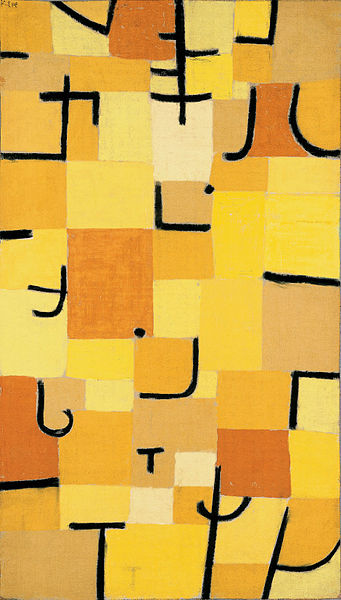June 29, On This Day
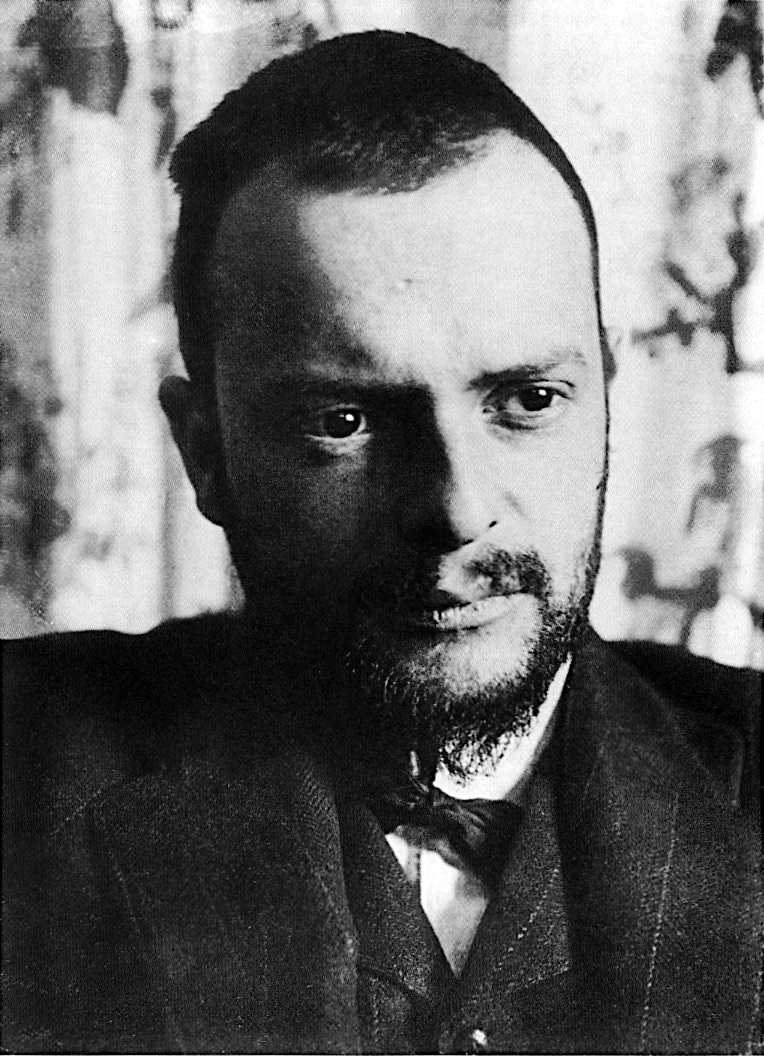
Paul Klee in 1911
He left behind a legacy comprising over 9,000 works of art spanning movements that included expressionism, cubism, and surrealism and more, when he passed away on June 29, 1940. The style of Swiss-born German artist Paul Klee was, indeed, highly individualistic, with works that reflect dry humor and sometimes childlike perspective, moods and musicality.
Klee was an early adopter of this movement and a member of one of German Expressionism’s regional factions, Der Blaue Reiter, a Munich-based group of artists founded by Wassily Kandinsky and Franz Marc, and bound together by the belief that art should express the metaphysical realm.
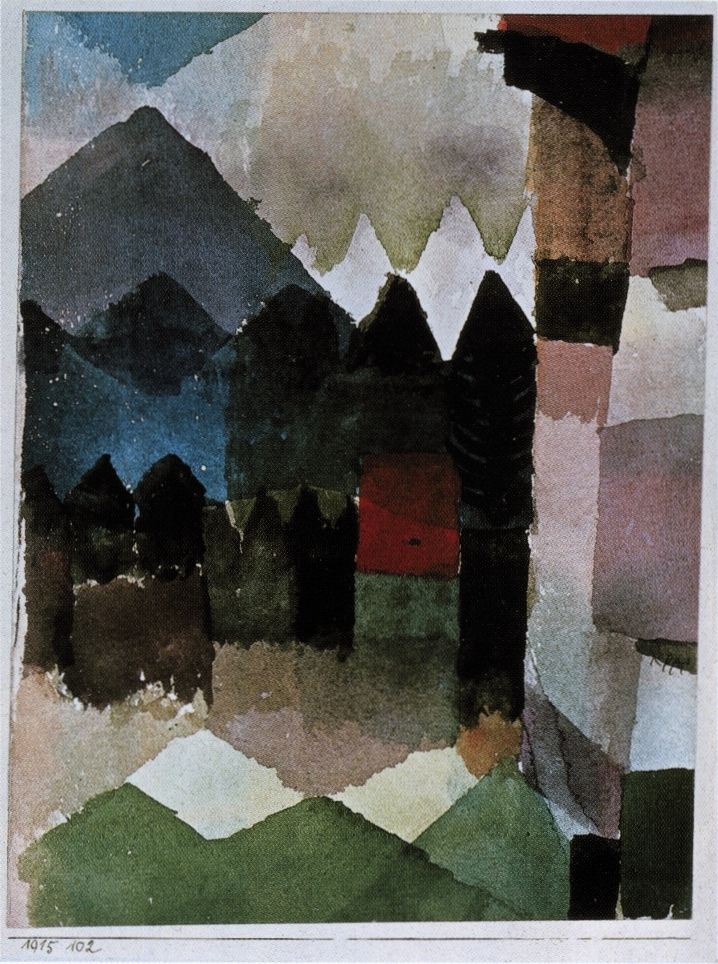
Föhn im Marc’schen Garten, 1915, watercolor on paper on cardboard, Lenbachhaus, Munich
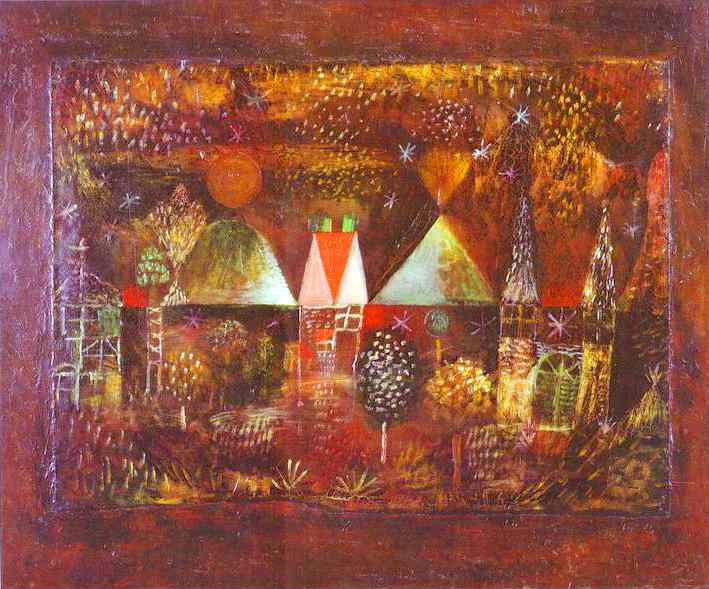
Nocturnal Festivity, 1921, The Solomon R. Guggenheim Museum, New York.
His lectures Writings on Form and Design Theory (Schriften zur Form und Gestaltungslehre) — published in English as the Paul Klee Notebooks — are held to be as important for modern art as Leonardo da Vinci’s A Treatise on Painting for the Renaissance.
The son of Ida Klee-Frick, a classical singer, and Hans Klee, a university lecturer in music, young Paul had a musical upbringing. He started learning the violin at just seven and was prodigiously gifted, leading him to joining the municipal orchestra aged just 11. Klee went on to marry pianist Lily Stumpf in 1906, with whom he later had a son. Perhaps because of his talents, music had a strong influence on his art.
His prolific career explored colour theory extensively. An artistic breakthrough came for Klee in 1914, when he briefly visited Tunisia and was stunned by the quality of the light there — “Color has taken possession of me; no longer do I have to chase after it, I know that it has hold of me forever… Color and I are one. I am a painter.”
Klee and Russian painter Kandinsky both taught at the Bauhaus school of art, design and architecture in Germany. Klee also taught at the Düsseldorf Academy from 1931 to 1933, and was singled out by a Nazi newspaper, which said, “Then that great fellow Klee comes onto the scene, already famed as a Bauhaus teacher in Dessau. He tells everyone he\’s a thoroughbred Arab, but he\’s a typical Galician Jew.” His home was searched by the Gestapo and he was fired from his job.
In 1933–34, Klee had shows in London and Paris, and finally met Pablo Picasso, whom he greatly admired. In 1935, he developed scleroderma, an autoimmune disease resulting in hardening of connective tissue. His pain seems to reflect in his last works of art.
The Klee family had emigrated to Switzerland in late 1933. But, Klee died without having obtained Swiss citizenship, despite his birth in that country. His art work was considered too revolutionary, even degenerate, by the Swiss authorities, but eventually they accepted his request six days after his death.
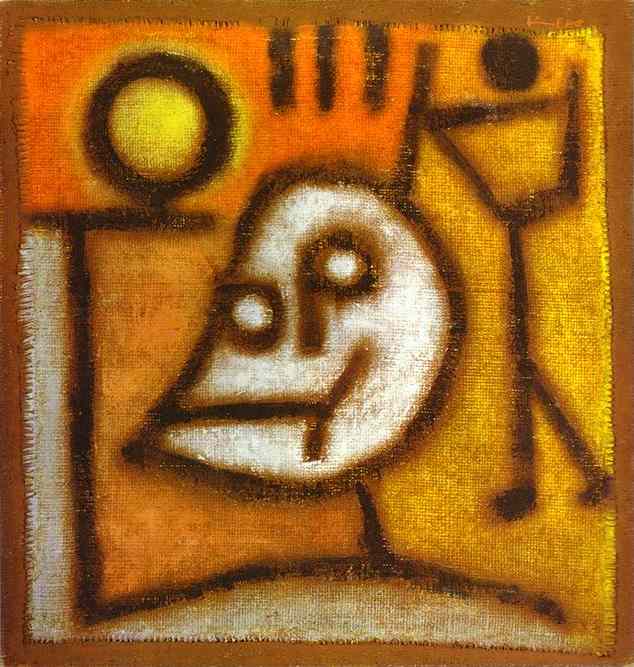
Tod und Feuer (Death and Fire), 1940, oil on distemper on jute, Zentrum Paul Klee, Bern

